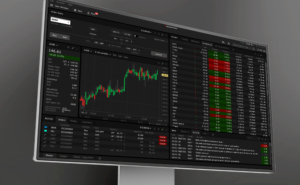Positive data surprises especially in the US have continued to mostly drive interest rates higher and the USD stronger over the last two weeks. Americans increased their consumption by 0.4% in February and reduced their savings rate to its lowest level since December 2022, while the ISM survey showed a clear positive surprise in March for US manufacturers who are now reporting expansion, also for the first time since 2022. While core PCE inflation (the Fed’s preferred measure) came out as expected for February, 0.3% m/m price increase is still too much, and the January number was revised up to 0.5% m/m. All in all, the data does not support an early rate cut. Fed Chair Jerome Powell, among others, signalled over Easter that the direction of interest rates is still down, but that the strong data allows for waiting in order to gain more confidence about declining inflation before moving. The market is now pricing almost no chance of a May rate cut, instead looking for June. Key data to watch will be the jobs report later today (Friday) and March CPI on Wednesday next week.
In the euro area, inflation in March was slightly lower than expected, with the core price measure increasing 2.9% y/y. According to the ECB, that corresponds to a bit more than 0.2% m/m, so still to the high side in terms of reaching the 2% annual inflation target, especially as service inflation is 0.4% m/m. In other words, the concern remains that a tight labour market and high wage growth will keep inflation running. The euro area unemployment rate was 6.5% in February, and since earlier data was revised, that still means a record low. Euro area PMIs for March point to economic growth for the first time since May last year.
None of this will likely have changed the quite clearly communicated view from the ECB that there will be no rate change at next week’s meeting but that a rate cut in June is to be expected. This means that the meeting on Thursday is unlikely to be a major market mover. We expect the ECB to restate the outlook for a June cut provided that the disinflation process continues, and to clarify that it is a 25bp rate cut and not 50bp, as some market participants have been speculating lately. We do not expect them to give strong guidance as to what will happen after June.
The 2023 budget deficit in France was 5.5% of GDP, significantly higher than expected, drawing negative comments from rating agency Moody’s. S&P already has France on negative outlook and there is clearly risk of a downgrade.
Not only US manufacturers reported progress in March. In China, manufacturing PMIs also rose and especially the official version delivered a strong positive surprise. The manufacturing upswing is supporting commodity prices which are generally rising, not least the oil price which is also affected by the conflicts in the Middle East and the war between Russia and Ukraine. However, we are starting to see signs that the manufacturing sector has stopped improving, for example in export data from Asian countries that are usually leading indicators. This includes Japan where the Tankan business survey showed weaker (but still strong) manufacturing – but also the best sentiment among large non-manufacturers since the early 1990s.
Full report in PDF.









